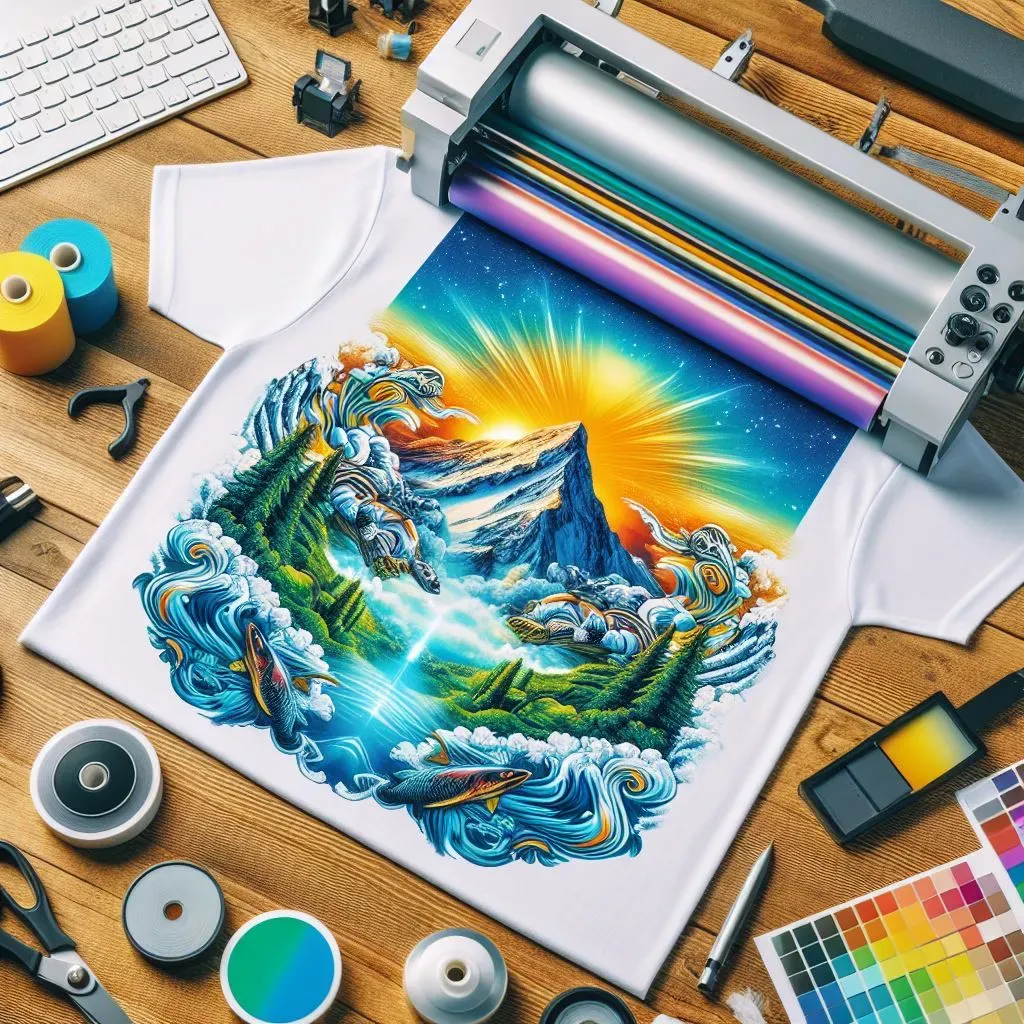DTF transfers mistakes can be the difference between a stunning custom print and a ruined project, especially for those new to the DTF printing process. Understanding the common DTF problems that can arise, such as incorrect temperature settings, improper film selection, or inadequate pre-treatment, is crucial for achieving high-quality transfers. As the popularity of Direct-to-Film (DTF) technology continues to grow, it becomes even more important for enthusiasts and small business owners to familiarize themselves with these pitfalls. This article will delve into some of the most prevalent DTF printing errors and provide insight on how to DTF transfer with confidence, ensuring the highest standards of quality are met. By learning to recognize and rectify these mistakes, you can enhance your overall printing experience and improve DTF print quality, ultimately helping your projects shine.
When engaging in Direct-to-Film printing, it’s vital to be aware of potential missteps that could adversely affect your results. The intricacies of DTF transfers involve various elements, such as selecting the right materials and mastering the application technique, which can lead to frequent errors if mishandled. Often referred to as DTF printing pitfalls, these complications range from inconsistent print outcomes to incorrect fabric choices, significantly impacting the success of your final product. By understanding these fundamental principles and addressing common DTF problems, you can improve your results and streamline the process. This guide aims to illuminate these challenges, empowering you to navigate the world of DTF printing with greater ease and knowledge.
Understanding DTF Printing Issues
DTF printing has gained immense popularity for its versatility and ability to produce vivid graphics on various fabrics. However, users often encounter issues that stem from a lack of understanding of the technology. One frequent problem is related to the printer’s calibration and maintenance. Neglecting these aspects can lead to inconsistent print quality, where colors may not appear as vibrant as anticipated, affecting the final product’s appeal. Knowing how to adjust printer settings and conducting regular maintenance is crucial for achieving the desired results.
Another issue in DTF printing is the interaction between different fabric types and ink. When transferring designs onto natural fibers like cotton, it’s essential to recognize that DTF transfers might not perform as well compared to synthetic fabrics. Understanding the compatibility of inks with various fabrics is vital; users should experiment with different materials to determine which yield the best results for their specific designs. Taking time to research helps minimize common DTF problems associated with fabric selection.
Common DTF Transfer Errors to Avoid
Many users encounter errors during the DTF transfer process that can lead to disappointing outcomes. Some of the common problems include using incorrect temperature and pressure settings during the heat application. Each film and fabric requires specific conditions for the transfer to adhere properly. Failing to follow these guidelines can lead to either poor adhesion or overheating the fabric, which could ruin the design entirely. Therefore, it is imperative to always consult the manufacturer’s heat transfer recommendations.
Beyond temperature, the choice of film is another critical factor. Using substandard or incompatible films can significantly compromise the transfer’s overall quality. Peeling, fading, and blurry images are often a direct result of using low-quality DTF films. To prevent these common mistakes, always investigate reputable suppliers and select films that are specifically designed for use with DTF technology. This step ensures that your prints will have the necessary durability and vibrancy that attracts customers.
Crucial Pre-Treatment Steps for DTF Transfers
Pre-treatment of fabrics is often a neglected step in the DTF transfer process, yet it plays a vital role in ensuring adherence and quality. Specifically, natural fibers may require a pre-treatment solution to enhance the ink’s bonding capabilities. Skipping this essential step leads to transfers that fade quickly or do not apply uniformly. Therefore, understanding the specific pre-treatment needs of each fabric type is crucial for a successful application.
Additionally, pre-treatment can contribute to the longevity of the print. For instance, using a pre-treatment solution specifically designed for DTF applications can help in achieving softer prints that are less likely to crack over time. Establishing a consistent pre-treatment process guards against errors and ensures high-quality outcomes, reflecting well on your business and keeping customer satisfaction high.
Improving DTF Print Quality: Techniques and Tips
Improving DTF print quality is essential for sustaining a successful printing venture. One effective technique is to regularly calibrate the printer and maintain its components, ensuring that ink flow remains optimal and vibrant colors are produced. Users should also consider investing in higher quality inks designed for DTF applications that yield better results on various fabrics. This commitment to quality will not only enhance the aesthetics but also contribute to the durability of prints.
In addition to using quality materials, setting up a controlled environment can significantly improve DTF print quality. Factors such as humidity and temperature can affect how inks react during the printing process. Maintaining optimal conditions and keeping equipment in a clean environment minimizes the chances of common DTF printing errors. Consider implementing routine checks to ensure everything is functioning correctly, as these small actions lead to more consistent and high-quality results.
Testing: A Crucial Step in DTF Transfers
Conducting test prints is an invaluable step that many businesses overlook in their DTF transfer process. By testing designs on a smaller scale before committing to large orders, you can identify any potential issues with film compatibility or color accuracy. This practice allows you to refine settings and make necessary adjustments without wasting materials, ultimately saving time and money.
Moreover, running tests on various fabric types gives insight into how well certain designs will hold up on different materials. By observing the outcomes of your test prints, you can gain a better understanding of how fabric types influence DTF transfer applications. This information is critical for establishing a reliable process and maximizing customer satisfaction with final products.
Exploring Fabric Types for Successful DTF Applications
Understanding the various fabric types available is essential for successful DTF applications. Polyester fabrics are a favorite among DTF users for their ability to achieve vibrant colors and durable designs. This synthetic material holds DTF transfers exceptionally well, ensuring that prints remain intact through washes and wear. When selecting fabrics for your DTF projects, prioritize those that are compatible with the technology to get the most desirable results.
On the other hand, natural fabrics such as cotton can present challenges when applying DTF transfers. Without proper pre-treatment steps or adjustments in technique, cotton may not retain the color or clarity of designs as effectively as synthetics. For businesses focusing on natural fabrics, understanding the right approaches—like selecting suitable inks and pre-treatments—can vastly improve transfer quality and ensure that products meet customer expectations.
Frequently Asked Questions
What are the common DTF printing errors to avoid?
Common DTF printing errors include inconsistent print quality, improper film selection, incorrect temperature and pressure settings, and neglecting pre-treatment of fabrics. By addressing these issues, you can improve your DTF transfer quality and achieve better results.
How can I improve DTF transfer quality?
To enhance DTF transfer quality, regularly maintain your printer, choose high-quality films, apply the correct heat and pressure settings, and pre-treat fabrics when necessary. Running test prints before large orders can also help identify potential problems.
What are typical common DTF problems faced by beginners?
Beginners often encounter problems such as improper film selection, incorrect temperature settings, and failing to test transfers before production. Understanding these common DTF problems can help avoid costly mistakes and increase overall print quality.
Which fabric types are best for DTF transfers?
Polyester fabrics are highly recommended for DTF transfers because they allow for vibrant and durable prints. While cotton is also used, it may require pre-treatment to achieve satisfactory results with DTF printing.
How to run test prints for DTF transfers?
To run test prints for DTF transfers, select a small sample of your design, use the chosen film and settings, and apply the transfer to the fabric as per manufacturer guidelines. This process will help you identify any issues without wasting materials.
What is the importance of pre-treatment in DTF transfers?
Pre-treatment is crucial for fabrics like cotton, as it enhances adhesion and longevity of the DTF transfer. Skipping pre-treatment may lead to fading or poor transfer quality, making it an essential step in ensuring successful results.
| Common Mistakes | Description |
|---|---|
| Inconsistent Print Quality | Can arise from outdated ink, poorly maintained printers, or incorrect settings. High-quality ink is crucial. |
| Improper Film Selection | Using low-quality films can lead to poor adherence and clarity. |
| Incorrect Temperature and Pressure Settings | Not following recommended settings can result in failed applications or fabric damage. |
| Misapplication of Heat Transfer Vinyl (HTV) | Confusing DTF with HTV can compromise the quality of output. |
| Ignoring Pre-Treatment Requirements | Skipping pre-treatment can lead to fading and poor adhesion. |
| Not Testing First | Failing to run test prints can waste materials and affect customer satisfaction. |
| Accounting for Fabric Types | Different fabrics react differently; polyester is best suited for DTF. |
| Improper Layering | Misalignment during layering can detract from the final design. |
Summary
DTF transfers mistakes can significantly affect quality and business reputation in garment printing. By being aware of these common errors, such as inconsistent print quality and improper film selection, printers can enhance their operational efficiency and ensure better results. Mastering the various aspects of DTF printing, from understanding the technology to following best practices, is essential for achieving vibrant and lasting prints. Regular testing, proper maintenance of equipment, and the correct handling of materials are key steps to sidestep pitfalls and create products that customers will love. Ultimately, with the right strategies and knowledge, anyone can excel in the art of DTF transfers.



